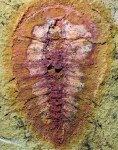A strong argument for the validity of evolution is the fact that our research into diseases and medical treatments assumes that evolution accounts for the divergence of both organisms such as ourselves and disease pathogens. Without this assumption, our medical research would grind to a halt.
An article in Red Orbit, an Internet journal for news on science, space, and technology, Emergence Of Fungal Plant Diseases Linked To Ecological Speciation, discusses the reasoning behind a commentary published by Tatiana Giraud, Pierre Gladieux, and Sergey Gavrilets that argues for the need for funding for general research on evolution. Without understanding evolution, they argue, we would not be able to understand how new diseases emerge, since a new species may provide a new and better host for certain portions of a pathogen community. Pathogens themselves also tend to evolve rapidly.
So when we hobble efforts to teach evolution, we are undercutting the ability of our society to generate scientists capable of studying the one group of nature's organisms which still poses a serious threat to human life. Anti-evolutionary crusaders are also the loudest voices for cutting government and private funding of evolutionary research. A citizenry unaware of the value of understanding evolution will be less likely to object when funding for evolution is cut.
So the next time you come down with a disease and the good doctors at your local hospital quickly identify and treat your disease, say a prayer of thanks for the scientists who have devoted their lives over the past 15o years understanding the nature of evolution! Then next time you hear someone suggest we cut funding for evolution research, ask him or her how Intelligent Design advocates would approach the control of infectious diseases.
This leads me to think about the theology of Creationism and Intelligent Design, which would have us believe that all the diversity of species is purely the result of recent creation of all species by God. Ian Anderson, the driving creative force behind the rock group Jethro Tull, wrote a lyric that goes, "The jungles are full of crocodile nasties/ and he who made kittens put snakes in the grass."
The comedy group Monty Python wrote a parody of the song "All Things Bright and Beautiful," called "All Things Dull and Ugly." Here are the lyrics of the original song (which I remember singing in my church's children's choir):
Refrain:
All things bright and beautiful,
All creatures great and small,
All things wise and wonderful:
The Lord God made them all.
Each little flow’r that opens,
Each little bird that sings,
He made their glowing colors,
He made their tiny wings.
The purple-headed mountains,
The river running by,
The sunset and the morning
That brightens up the sky.
The cold wind in the winter,
The pleasant summer sun,
The ripe fruits in the garden,
He made them every one.
The tall trees in the greenwood,
The meadows where we play,
The rushes by the water,
To gather every day.
He gave us eyes to see them,
And lips that we might tell
How great is God Almighty,
Who has made all things well.
Here is Monty Python's version:
All things dull and ugly,
All creatures short and squat,
All things rude and nasty,
The Lord God made the lot.
Each little snake that poisons,
Each little wasp that stings,
He made their brutish venom.
He made their horrid wings.
All things sick and cancerous,
All evil great and small,
All things foul and dangerous,
The Lord God made them all.
Each nasty little hornet,
Each beastly little squid--
Who made the spiky urchin?
Who made the sharks? He did!
All things scabbed and ulcerous,
All pox both great and small,
Putrid, foul and gangrenous,
The Lord God made them all.
In theological circles, these songs highlight the problem of theodicy, the name given to the question, "If God is a loving God, why do we have such a multitude of evils in the world?" A theology that embraces the findings of science has no need of this question. The evolution of all the things we value most, including ourselves, strawberries, bluebirds, ladybugs, goldfish, and kittens, also produced all the nasty, ugly parts of nature. In Unitarian Universalism, this is referred to as the interconnectedness of all life. Embracing this leads in a very different theological direction than a Creationist theology.
It also means that when we study evolution, we are studying life, ourselves, and--I would assert--God. Other religions, such as Buddhism and Taoism, also embrace the plurality of nature, pointing out that the distinctions between good and bad, beautiful and ugly, medicine and poison, are human inventions, not a part of the natural order. The sooner we recognize this, the more quickly we can approach an understanding of the whole which is both wholesome and healthy.

